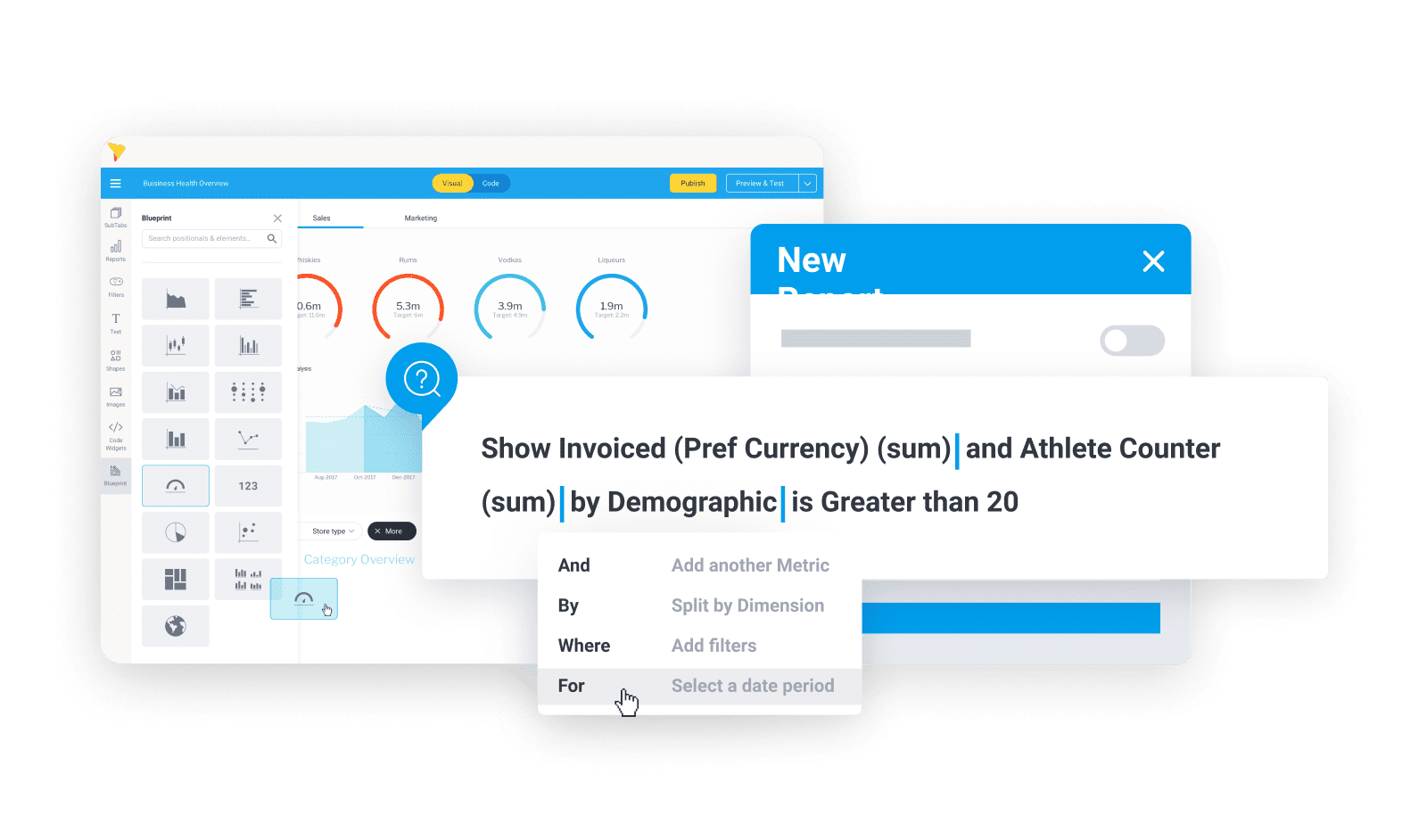Natural language query (NLQ) is fundamentally a feature designed to democratize self-service analytics, and help make it more pervasive throughout the organization.
While fast becoming a standard capability of modern business intelligence (BI) solutions, however, the current iteration of search-based NLQ hasn't delivered on its promises, with many mainstream business users still unable to use the tool to ask questions of data.
To ensure you get the right NLQ solution for your users, this blog covers 3 key business considerations to keep in mind when choosing a BI platform with a NLQ capability.
#1 - Does NLQ support how your business users ask questions?
For true self-service BI, NLQ tools need to be able to support how everyone ask questions of their data - whether in everyday, common language, or in technical terms - before it can accurately interpret, and answer your questions with relevant results.
At present, many NLQ tools rely on you to use free text search to get answers, but often there isn't any guidance on what to ask, or how to pose your question in the tool. Many mainstream business users without analytics experience then need to go to experts.
This defeats the purpose of 'self-service BI', and can limit the overall adoption of NLQ.
However, when the NLQ tool itself is able to guide you on how to build your query (such as being pre-programmed to provide popular search suggestions), and that supports both basic and complex queries is the best option for reliable insights. This is what’s called Guided Natural Language Query, a new approach we recommend exploring.
Guided NLQ, Yellowfin's natural language query solution, follows this approach and intuitively provides a list of relevant choices for both common and complex questions, such as ‘compare’, ‘count’, and ‘list’. It proactively guides you toward the right level of data to answer your query, and can accommodate every type of BI user and query type.
Read more: An introduction Guided NLQ: What is it?
#2 - Is NLQ integrated throughout the analytics platform?
Ensuring your NLQ tool is leveraged by your users, and is effective in providing helpful answers, relies heavily on its level of integration with the rest of the analytical platform.
Many NLQ vendors stick a search box in the corner of the dashboard user interface, which doesn't guarantee the capability is taken advantage of by your users during their regular analytics workflow. Ideally, NLQ is best as a standalone module not tied to a single UI, data set or dashboard, which can be launched from anywhere in the platform.
The more visibility and access, the easier it is for people to use during their workflow.
Similarly, if the NLQ tool does has integration with other key technologies, such as automated business monitoring (ABM) and natural language generation (NLG), its ability to quickly uncover hidden outliers and trends in data sets, or generate best practice explanations and visualizations that answer your query accurately, is much greater.
Read more: Natural Language Query: 5 Benefits of Guided NLQ
#3 - Is NLQ easy to embed into business applications?
NLQ is another way to make analytics more pervasive throughout the organization, and this goal is best realized when the tool isn’t just limited to your analytics component.
The best NLQ tools allow you to embed them into your other business apps, whether it’s content management systems (CMS), customer relationship management (CRM), human resources (HR) payroll, or finance systems, as it greatly helps connect results in these applications back to your analytics data, and assists in ensuring the tool and the analytics suite as a whole is used by more people while they work normally.

Yellowfin Guided NLQ is designed to be embedded seamlessly into business applications. ISVs searching for an NLQ analytics solution can white-label this capability to enhance your product’s value fast, while enterprises can quickly increase self-service insights for users outside of those actively engaging with the analytics component.
A simple way to ask the hard questions
How do business leaders foster a data-driven culture to help drive decision-making? That’s a good question, and Yellowfin Guided NLQ (Natural Language Query) is the right answer.


